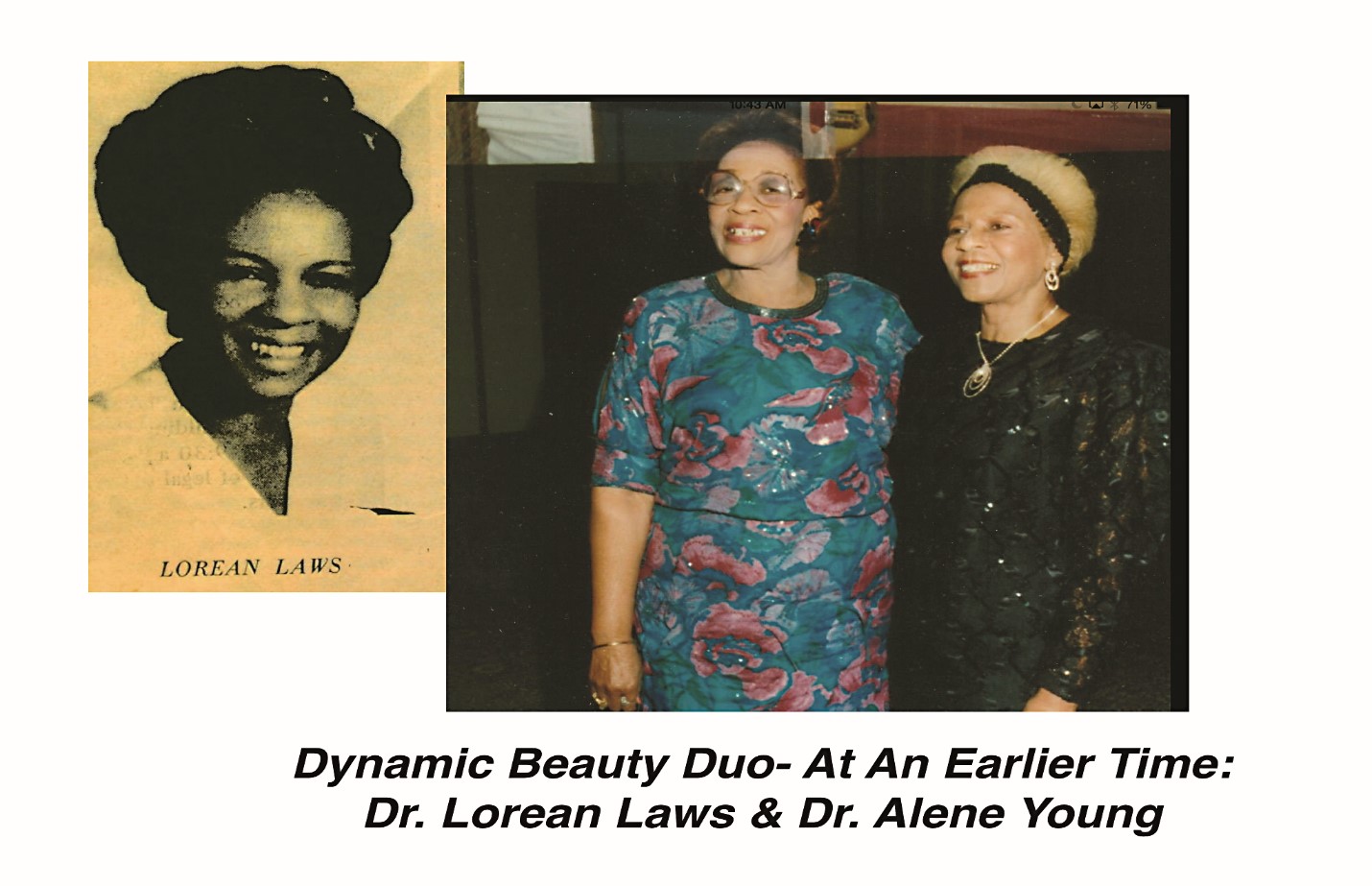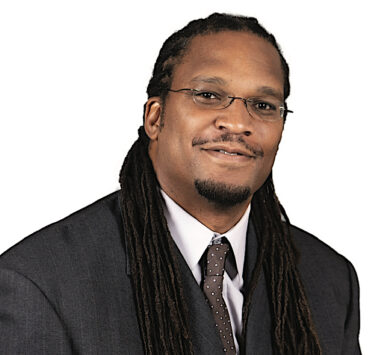Artist
The Oklahoma Eagle is excited to publish a new edition of its 918 Series, a brief Q&A with Tulsans who share their passions and invest in our shared communities. As the title suggests, the series will feature the responses to a mix of nine entertaining and thoughtful questions and one highly person/serious question, all within eight minutes. This week we feature a conversation between Eagle Contributor Melinda Thompson and Afro-Caribbean artist and teacher Shenequa Brooks. SHENEQUA weaves textiles and fibers together, which was featured in her exhibition “Wove” at 108 Contemporary in April and May. She has lived all over the world but is currently based in Chicago. She calls herself an artrepreneur, or someone who can create and educate at the same time.
1. What inspires your art?
Growing up in a single parent home predominantly by strong Caribbean women, that was what spearheaded my inspiration, creating love letters to them of appreciation through my work. Also, I would say the black hair salon is a huge deal. Just, different people throughout my childhood, which I would consider family today, doing my hair, whether that’s in a salon or at home or their home. Just figuring out what sacred space looks like through that language is a huge inspiration being from Caribbean.
2. How did you begin weaving?
Well, I began weaving in the summer of 2012 with Erica Hansen. She was my weaving teacher at the Kansas City Art Institute in Kansas City, Missouri. I was pursuing a bachelor’s degree in fibers and textiles, weaving is a part of that degree, whether you like it or not, you just have to go through it. So just so happened to fall in love with it.
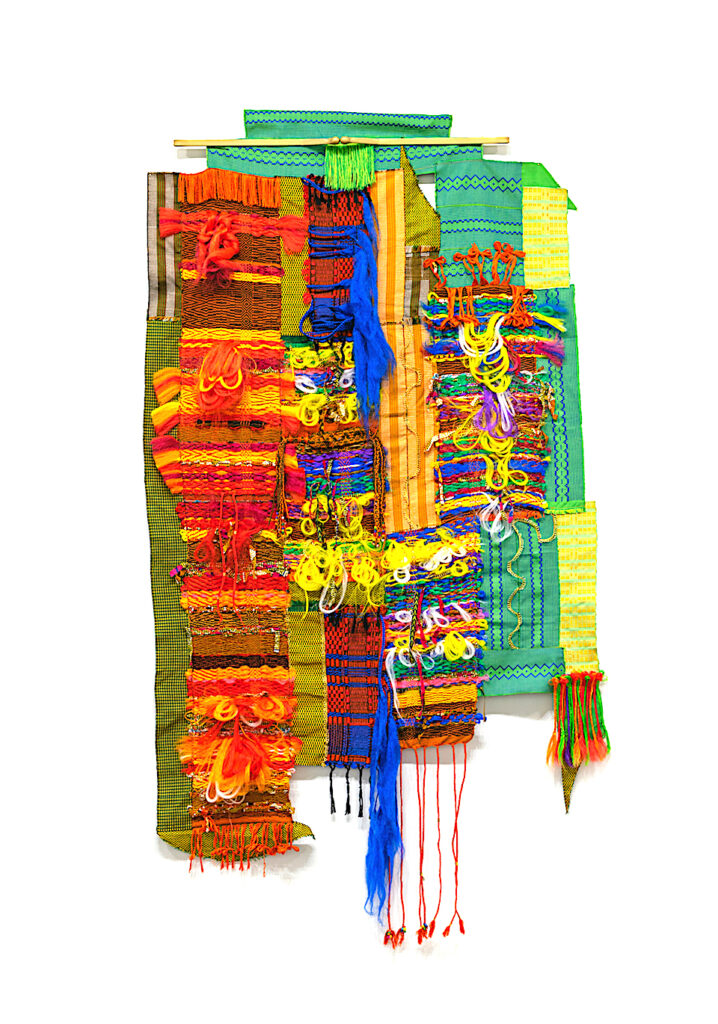
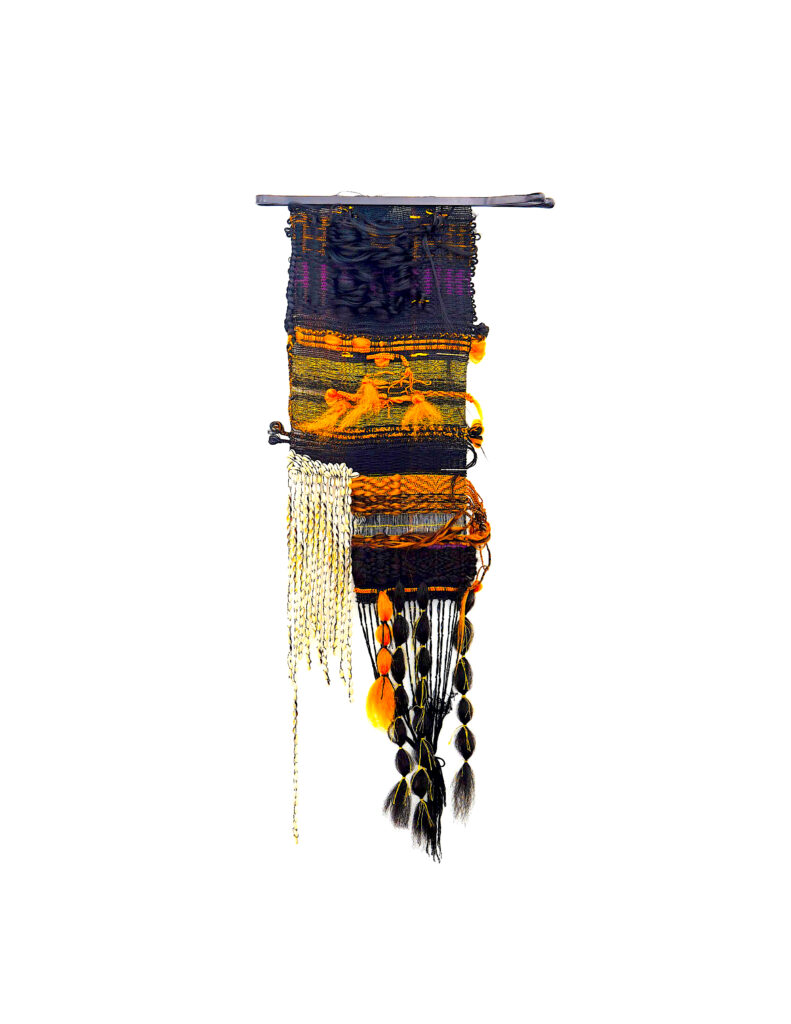
3. Why did you work with 108 Contemporary?
108 Contemporary actually was the ones that reach out to me. I did not know they existed until then. And upon further research and communication with them, it just organically became a relationship over time, because it was a year and a half in the making for the show and what to put in the show. And it was just one of those things where I really felt that the work that I intended on having on view was meant to happen at that given moment in time. And it was quite special, because it’s a mini retrospective of the body of work that spanned throughout eight years of my art practice.
4. What is that process of picking out pieces for a show?
I didn’t necessarily make work for a show this time around. So, it was really fun to come across work that I totally forgot about. It was just like I was on a scavenger hunt. It was a lot of fun, but then it was also like how do you curate that down to the most meaningful to the ones that make the most sense to the ones that literally follow this path and the story you want to share with your audience? So, it became like, “Yeah, I found all this treasure, but I am not going to show every single piece of this treasure.” I was really intentional about.
5. What do you think that other young black artists in North Tulsa should do to get their work out there?
I feel that in our time now we have social media, which I feel for me was a huge thing. I always try to push myself out there in some shape or form. So, I would say for artists that are really nervous or just don’t feel comfortable in front of crowds to look at social media, not so much every day thing, but probably once a week or once every two weeks easing your way into those spaces because that’s where a lot of people just are.
6. How do you encourage other artists to use their platform or their medium to show me messages?
I feel like we all have a voice, and it deserves to be heard. So, what feels comfortable for you? What works for you to best do that? I don’t think there’s no right or wrong in the industry that we’re in. I just feel like you really have to figure out what works for you. And what’s true. And authentically your voice. It’s easy to get wrapped up into seeing what others are doing.
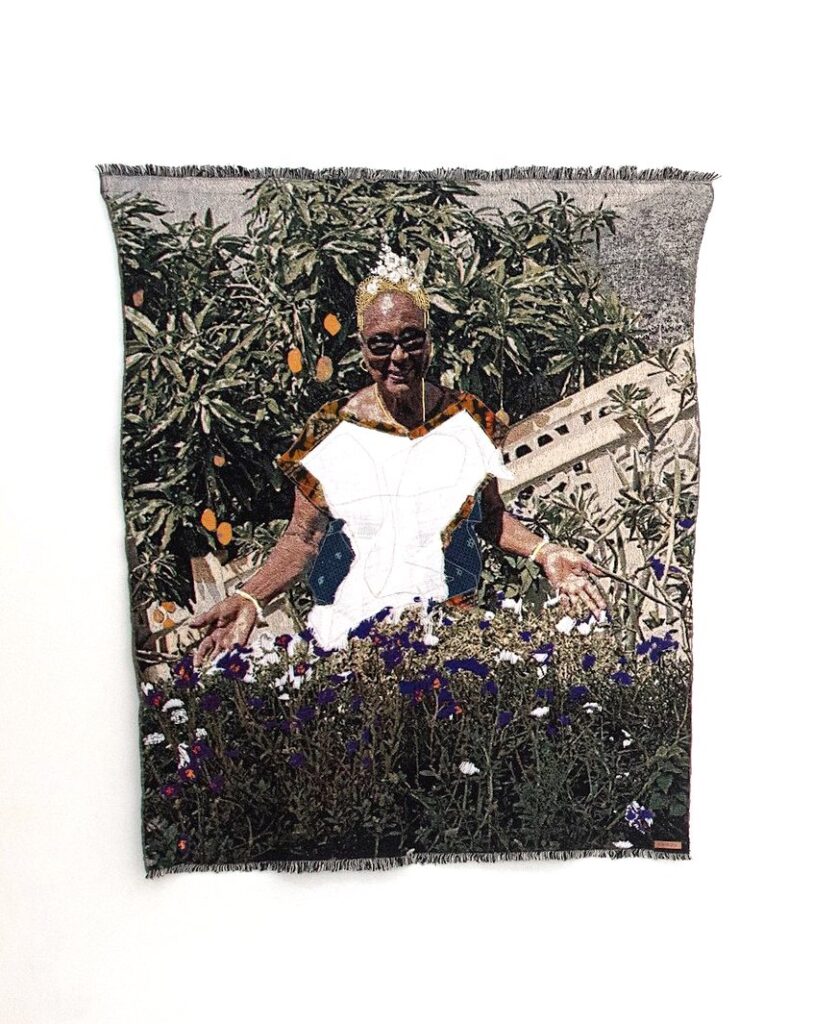
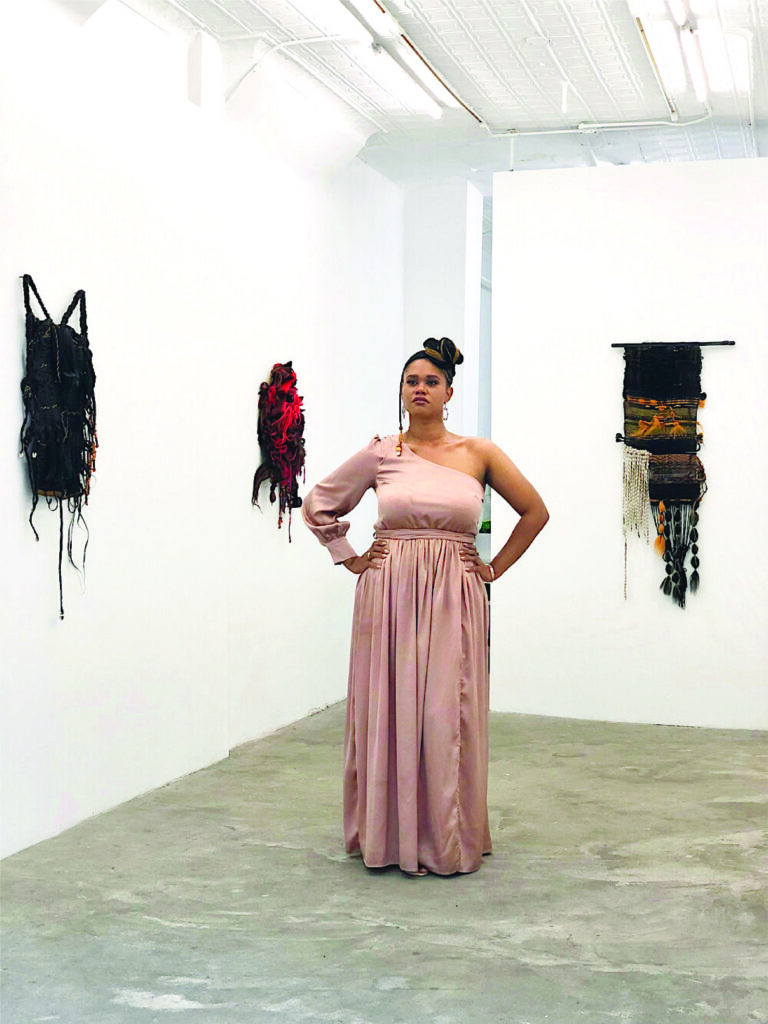
7. What was your favorite part of the art scene that you visited?
I honestly cannot pinpoint my favorite space or favorite art space. I wasn’t able to see everything. I that’s something that I mentioned to Jenna (executive director Jen Boyd Martin) at 108. Is that what I did feel in Tulsa spiritually was a new beginning.
8. As someone who’s had exhibitions in other places, what is something that North Tulsans could learn from these other art scenes?
Being born in the Caribbean and having a passport at a young age, it definitely, and I tell people this all the time, when you leave outside of where you’re from all the time, you’re always going to learn something new. It’s innately going to come. You cannot not learn something new, whether it’s culturally, economically, socially, spiritually, you name it. It’s going to happen in the food you eat, the language people talk and the way someone carries themselves. The same goes for the art world.
9. How would you encourage North Tulsan artists to do what they love while educating?
I feel like we put limits on ourselves when art is a total opposite of that, what we do as creators and as visionaries and just amazing pillars of this world, because I truly feel artists are just that, we can make change in so many ways. And our voices are just so powerful in that realm. And I am trying and I’m working, and I am doing that work right now.
10. Can you just briefly explain what your mission is just in general and how you’re doing it?
Right now, is to let other people of color, other women of color know that we are here, we are present, and we are showing up and showing out in the best way possible. I also want craft to be more in the contemporary art world. I’m coming guns blazing representing craft in that way as a medium And then overall my mission is to stay true to myself and my art practice, the concepts, the topics I want to discuss, even if it hurts, even if it doesn’t go well, even if it’s criticized, I always want to stay authentically, SHENEQUA true to me.
About This Project
The Oklahoma Eagle, in partnership with the University of Maryland Philip Merrill College of Journalism and the School of Journalism & Mass Communication University of Wisconsin-Madison, and the “On the Ground Reporting” project, collaboratively instructed participating journalism students through the process of publishing stories that focus on community groups and issues in Tulsa and Oklahoma. The class was led by Maryland associate professor and Washington Post staff writer DeNeen Brown, an Oklahoma native, who teamed with Eagle editors M. David Goodwin and Gary Lee.
To read other stories in the student project, visit https://theokeagle.com/on-the-ground-reporting/


